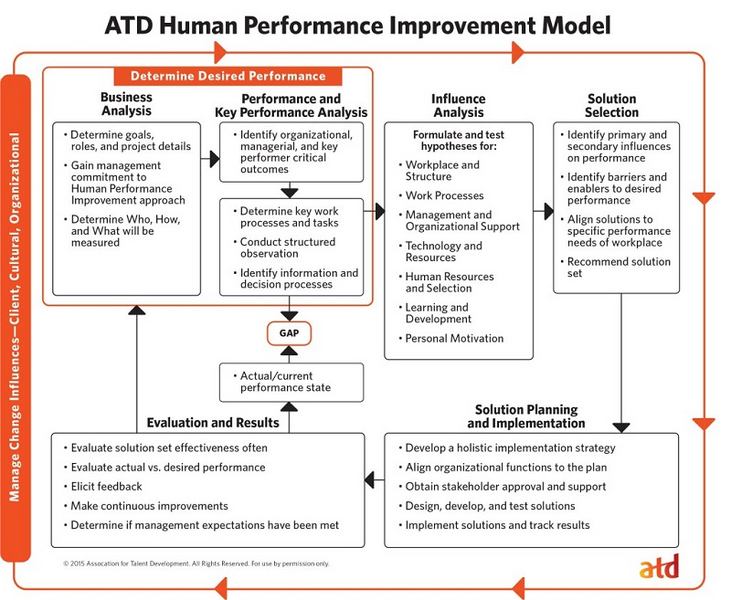ATD Blog
New Math of Sales Enablement: Using a Systems Approach
Tue Sep 18 2018
We need a “new math” formula in the sales enablement profession—one that we know will work and get the results our sales leaders, executives, shareholders or stakeholders, and especially our customers expect from our sales forces. The equation looks like this:
Building Blocks + Systems Thinking + Performance Consulting
= (Elevate Profession) x (Drive Revenue Growth)2
My last post explored the building blocks of sales enablement; now let’s examine the rest of the equation.
Using a Systems Approach
Daniel Kim, co-founder of Pegasus Communications Inc. and the MIT Center for Organizational Learning, offers the following definition of system: “A system is any group of interacting, interrelated, or interdependent parts that form a complex and unified whole that has a specific purpose.”
He continues, “The key thing to remember is that all the parts are interrelated and interdependent in some way. Without such interdependencies we have just a collection of parts, not a system.”
For our purposes, in organizational effectiveness and sales performance improvement work, “Systems thinking is a method of critical thinking where we analyze the relationships between the parts of an organizational system to understand it more fully to make better decisions about how to improve its performance, and therefore, business outcomes.”
I typically work with four systems:
sales selection
sales support (think: sales readiness and enablement)
sales learning
sales management.
For this purpose, I’d like to highlight the sales support and sales learning systems. Technically, sales learning is part of the support system, but it’s critical enough to fostering behavior change and delivering outcomes that I break it out separately.

Sales Support System
Ensure deep market and buyer persona knowledge.
Document buying process with decision/exit criteria. (Buying process exit criteria are the things each buyer needs to hear, see, feel, understand and believe in each stage to feel comfortable moving forward to the next stage, with you.)
Create buyer engagement content that aligns with decision/exit criteria.
Ensure reps have the domain/business acumen, with solution acumen, to communicate value in your buyers’ language.
Align sales process to buying process and use a buyer-oriented, consultative, solution-focused, outcome-driven sales methodology based on what works (and hopefully, what your top producers do).
Use sales enablement tools to manage, share, and track content and improve sales efficiency and effectiveness.
Train reps to engage buyers in valuable business conversations and to create real value and differentiation, through their buyer acumen, domain/business acumen, and solution acumen.
Use analytics to track training, content, sales behavior, and outcomes.
Sales Learning System
The sales learning system has three parts.
1. Prepare for Change
Ensure that your training content will get results.
Design a great learning experience.
Engage, enable, and empower frontline sales managers.
2. Guide the Change (The Five Stages of Sales Mastery and Behavior Change)
Teach the content and validate learning occurred.
Sustain the knowledge.
Develop skills (practice with expert feedback loops).
Transfer and apply skills on the job.
Coach to mastery over time.
3. Cement the Change
Get metrics and measures in place.
Manage to behavior and performance expectations.
Lead and manage the change until it cements in the culture.
When you focus on laying a foundation with the building blocks and supporting your sales force with these two systems, you will be well on your way to becoming a world-class sales enablement function.
Enter Performance Consulting
The last part of our formula is Performance Consulting. ATD has been a thought leader in advocating and training members in performance consulting, offering books and resources, curating content, and providing a certification in performance consulting.
Here is ATD’s Human Performance Improvement Model:

Take some time to read the graphic and walk through the flow of the model. If you’re familiar with instructional design, especially the ADDIE model (analysis, design, development, implementation, and evaluation), you’ll immediately see the similarity. It’s basically a consulting framework focused on:
identifying performance gaps between the current state and desired future state that are worth closing
ensuring you understand the root cause of the gaps
determining the best way to close them
implementing the solution effectively
measuring and evaluating the results.
Sometimes, in the whirlwind of daily business activity, with the bright shiny objects and fire-fighting that distract us (or our leaders, who cause our distraction), we get focused on reacting to problems or just running projects and initiatives in the building blocks framework, and forgo the analysis and diagnosis that would lead to uncovering and solving performance problems that would radically improve sales productivity (revenue per rep) or net sales.
Next Steps
This is a lot of content for a webinar or conference presentation, so I know it’s certainly a lot for a blog post. And due to space limitations, I’ve written at a high level and left a lot out.
At the minimum, I’m hopeful that my “new math” formula makes more sense now:
Building Blocks + Systems Thinking + Performance Consulting
= (Elevate Profession) x (Drive Revenue Growth)2
Your mission, sales enablers—should you choose to accept it—is to review this content and the associated links, create your own plan for how you will evolve your personal knowledge and skill as a sales enablement professional and performance consultant, and determine how you can evolve your department to better serve the needs of our sales force, its customers, and your business.
This article will not self-destruct, but I do hope you’ll take the assignment.
If you’d like to learn more, Mike is a speaker at ATD SELL 2018, where he will be presenting on his Sales Learning System with the Five Stages of Sales Mastery and Behavior Change on day 1 and leading a two-hour workshop on the topics in this post on day 2. Learn more about ATD SELL at https://events.td.org/Sell/About.
